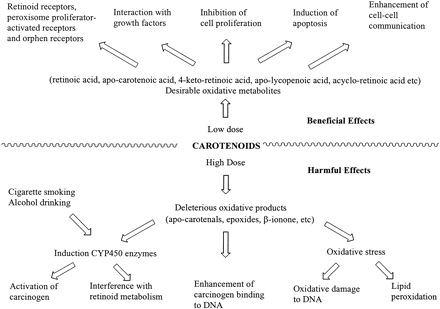It:Lycopene
Lycopene
Lycopene (molecular formula: C40H56) is one of approximately 600 known carotenoids; that imparts red colour to to many fruits and vegetables. It is a proven antioxidant.As lycopene can only be produced by green plants and some microorganisms (animals are dependent on plants as a source) it can be classified as a phytochemical.
Structure of lycopene1
| Lycopene
| |||
|---|---|---|---|
| IUPAC Name | 2,6,10,14,19,23,27,31-octamethyldotriaconta-2,6,8,10,12,14,16,18,20,22
,24,26,30-tridecaene | ||
| Other names | Ψ, Ψ-carotene; Rhodopurpurin
| ||
| CAS number | 502-65-8 | ||
| Chemical formula | C40H56 | ||
| Molecular mass | 536.89 g/mol | ||
| Apperance | Red | ||
| 3D picture:(1) |
| ||
Action
Lycopene is a powerful antioxidant present in many plant sources such as tomatoes,apricots, pink grapefruit, guava and watermelon. Humans cannot produce this substance so they obtain it by ingesting fruits but lycopene is present in the body in plasma where it is present as an isomeric mixture, with 50% as cis isomers. Processed tomato products such as ketchup are better sources of lycopene than fresh tomatoes and cooking increases lycopene uptake.
Lycopene is particularly effective in quenching free radicals especially singlet oxygen. It is also believed to play a role in the prevention of coronary heart disease by inhibiting free radical damage to LDL cholesterol. As cholesterol must be oxidized by free radicals in order to be deposited in the plaques that harden and narrow arteries lycopene prevents this.
Studies have shown that lycopene can be useful in:
- decreasing risk of developing atherosklerosis
- reventing and fighting cancer (especially prostate cancer)
- educing risk of osteoporosis
References
1.http://www.phytochemicals.info/phytochemicals/lycopene.php
2. J. Nutr. 135:2053S-2056S, August 2005 ( schematic diagram)


